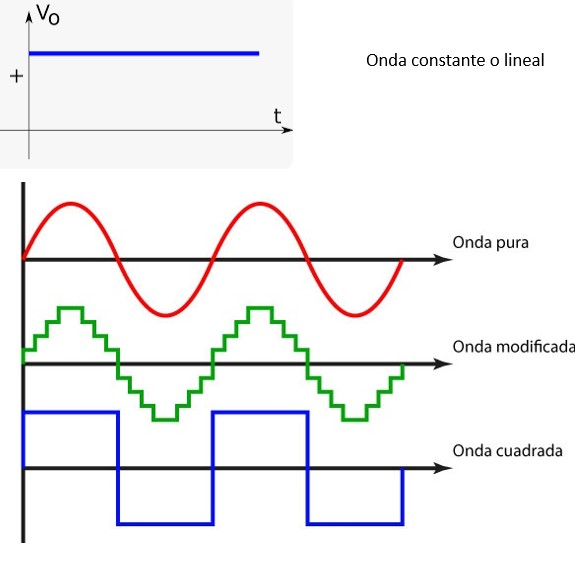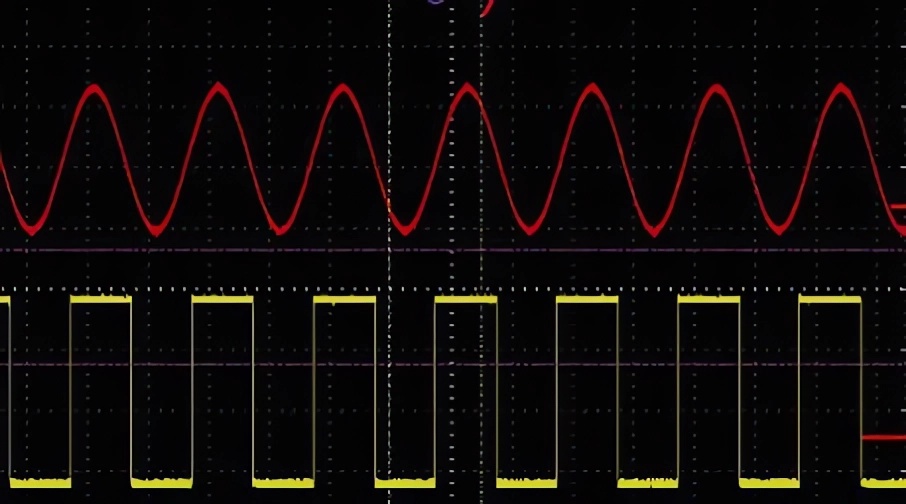Solar Energy
Types of electrical waves or signals
There are several types of electrical waves or signals, which are determined by the source. Here, we will focus on studying the common ones generated by DC-AC inverters in their various technologies.
First of all, we invite you to explore our website, energydcac. To learn about the content we have for you in our categories related to Solar Energy and DC/AC Power Systems.
And if you want to stay updated with our latest updates, we encourage you to register with us. It’s free and will provide you with valuable information.
What are electrical signals and why are they important?
If you have access to a device called an oscilloscope and connect it properly to any source of electricity. The first thing you will notice is that it will display different types of waveforms on its screen depending on the type of electricity.
If you connect it to a battery, you will see a constant linear waveform. A continuous curved waveform called a sine wave if you plug it into a household outlet, and so on. Here are some of the most common waveforms.

In the case of solar systems, having controlled and stable waveforms is crucial because they make the transmission more efficient and compatible with electrical equipment.
Here are the characteristics of the most common electrical signals for solar energy systems that you should be aware of, without going into depth. Therefore, we will provide you with the simplest classification of electrical waveforms.
The constant or linear waveform
This waveform has a constant value throughout time, in other words, it is a continuous flow of electricity between two points. Its main property is that it can be stored for later use.
The constant waveform is typical of direct current (DC) electricity and can be considered the origin of this phenomenon.
However, very few devices operate with it, so it almost always needs to be transformed into one of the waveforms we will see later.
It is generated by devices such as batteries, solar panels, etc. For example, in the case of batteries, their voltage is typically between 11 and 14 VDC.
Its production is the simplest and most economical of all electrical signals.
The electrical signals we will see next belong to the group of ‘alternating signals‘ or AC electricity, as their value changes with time from a negative value to a positive one.
These are produced by generators and, in the case of solar energy systems, by DC-AC inverters.
The pure sine wave
These types of signals are of the highest quality and are used both for transmitting electricity over long distances. And for operating household appliances and most of the equipment in our daily lives.
However, AC or alternating current electricity has the disadvantage of not being storable, and producing this waveform in its purest form is very costly.
As you can see from the image above, its values alternate but change smoothly. It is called a ‘sine wave‘ because it has the shape of the trigonometric sine function.
It is ideal for the operation of all types of equipment, both industrial and commercial, as well as household appliances. And its efficiency is very high, allowing for maximum performance.
In our post titled The pure sine wave inverter: features and operation we will explain its characteristics as an essential component of photovoltaic systems.
The modified waveform
It is a variant of the pure sine wave, which is produced for very specific equipment such as modified waveform inverters.
This signal is generated from a square wave but with an additional step where an electronic switch modifies it in pulses, making it closely resemble a pure sine wave.
Is a technology widely used today because it is less expensive to produce than a pure sine wave and many devices operate well with it. Except for those with motors and rotating components such as air conditioners, washing machines, refrigerators, etc.
In the article The modified wave inverter: what you need to know we will discuss this equipment and its applications, focusing on photovoltaic energy. Be sure to check it out!
The square waveform
It results in the cheapest and easiest to generate when it comes to alternating electrical waveforms. However, it has the significant disadvantage that currently only outdated and analog technology equipment operates with it.
This is because, due to its properties, equipment performs poorly and tends to become damaged in the short and medium term.
It is characterized by very abrupt changes in its values, and it is also affected by the type of load, unlike the previous electrical waveforms. In fact, it is very rarely used today.
In our post Square wave inverter: what you need to know we will discuss the most important aspects. Of the inverter that generates this type of waveform, including its characteristics and uses. Don’t forget to read it!
We hope you have enjoyed this article. If you have any questions or opinions, we invite you to leave them in the comments. We will be happy to respond. Until next time!
Explanatory video on electrical signals
Image sources
- energydcac.com
- wikipedia

